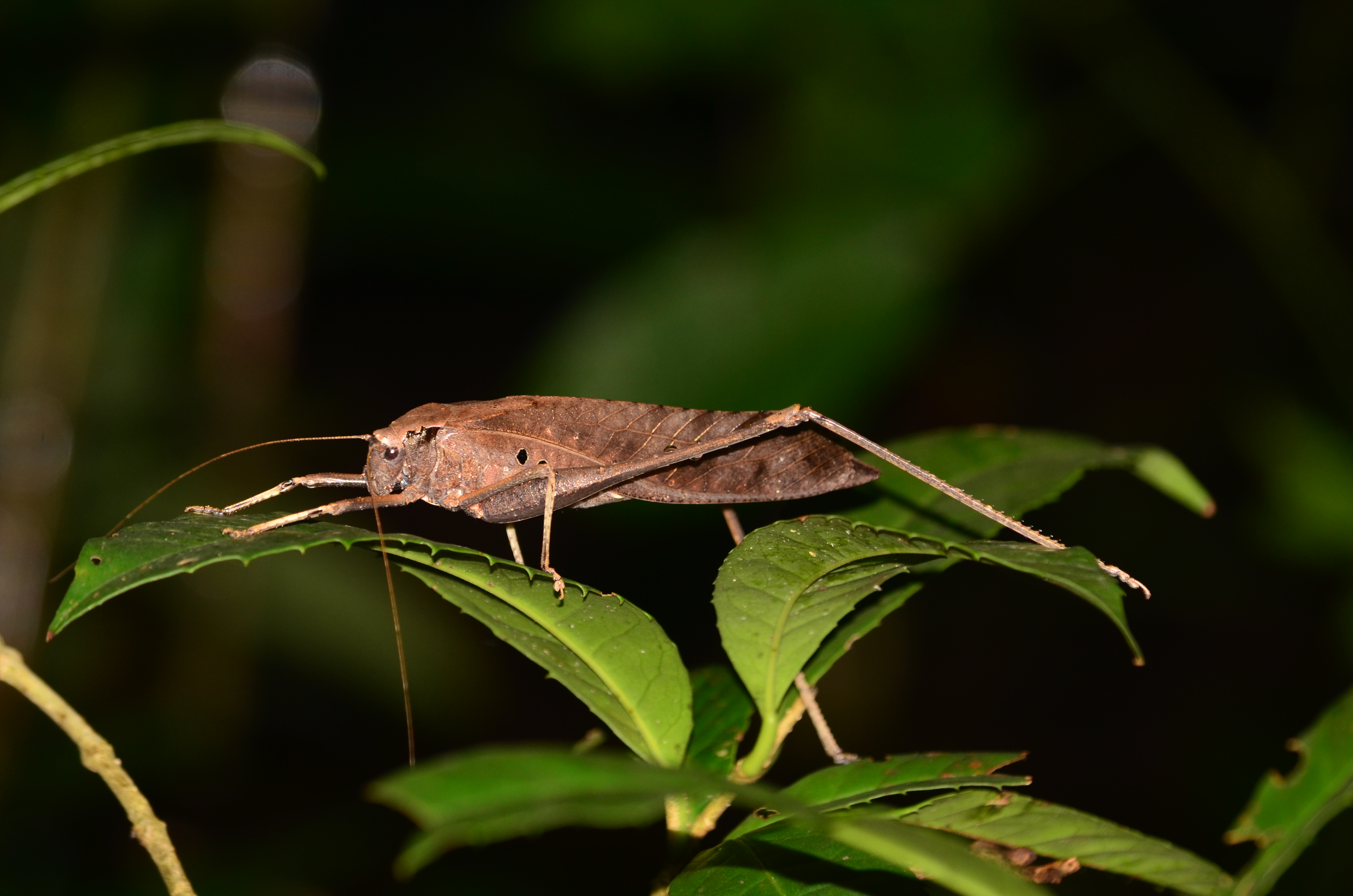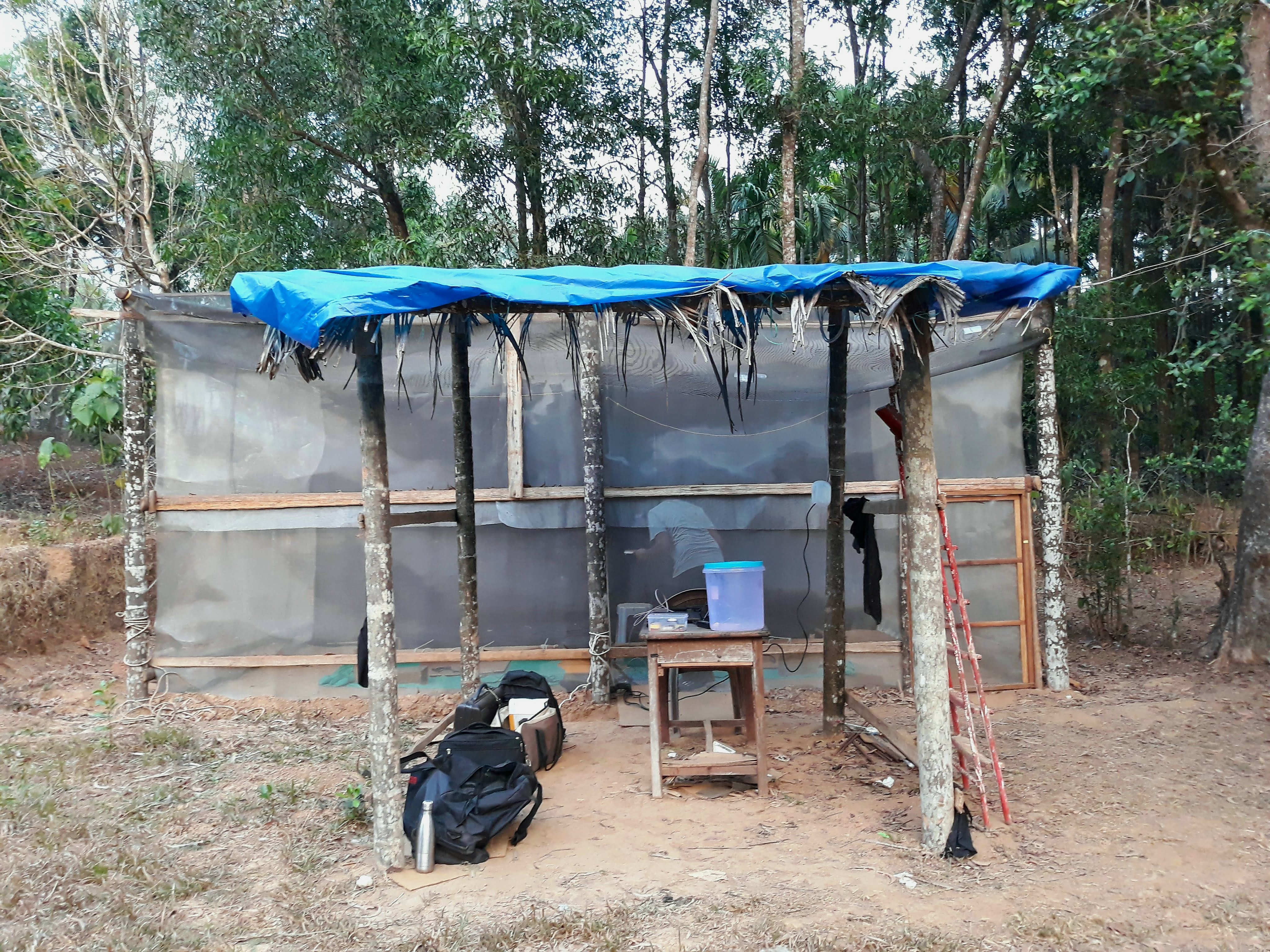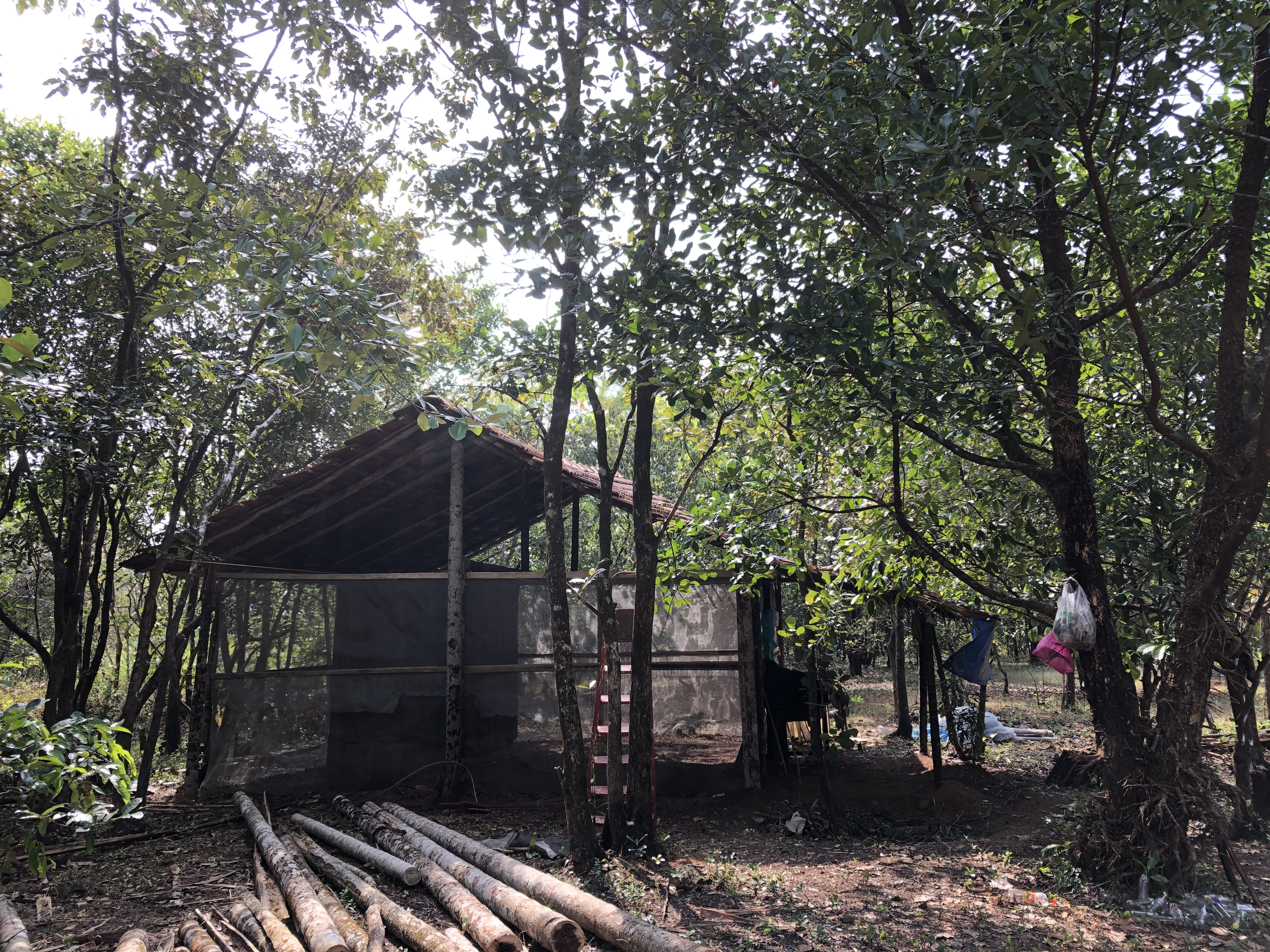Welcome to "Arts of Noticing, Thinking with Doing"
April 20, 2021
The following Field Note is by PPEH Graduate Fellow Pooja Nayak, a doctoral candidate in Anthropology and South Asia Studies at Penn. In this introduction to her "Arts of Noticing" series, Pooja invites us "to attune to practices across disciplines, of becoming-student, in the hope of learning how to see, feel, touch, and listen."
"Arts of Noticing" also comprises three additional parts by interdisciplinary contributors Mannat Johal, Liz Anna Kozik, and Larissa A. Johnson, edited by Pooja and Mia D’Avanza.
At midnight, our jeep turned towards the nearby forest patch in southwestern India. The area’s proximity to the mountainous Kudremukh National Park meant the February air was cool. The houses we encountered were separated by forest patches, mostly silent, with an occasional transistor sounding faintly in the distance. We were on our way to collect ‘Mecopodas’, a type of katydid or bush-cricket.

Female Katydid in Amboli, Maharashtra. Photo: Dr. Harish Prakash, Indian Institute of Science (IISc). Twitter: @_harish_prakash.
I was accompanying Dr. Harish Prakash, then a Ph.D. student with the Animal Communication Lab at the Indian Institute of Science (IISc), in his experiments to study how prey-predator interactions play out in this landscape, where homes, small areca and rubber plantations, forest patches, and paddy fields abutted one another. In the lab’s parlance, the Mecopoda was the “prey”, and the Megaderma spasma bat the “predator”. The lab’s previous analysis of the discards in bat roosts had shown a strong preference for mecopodas as food. Dr. Prakash explained we need to catch thirty to forty mecopodas: as bait, and as model prey.
In the forest, Sudhakar Malekudiya, the local field expert, and his two protégés led our group. We followed, our headlamps casting a milky glow, and stomped heavily to let snakes know we were around. Sudhakar, who belongs to an Adivasi (indigenous) community from the region, shared that though he had lived in the area all his life, he found the biologists’ interest in crickets peculiar at first. His interest increased as he helped with experiments, and his knowledge and relationships in the area meant Sudhakar worked full-time with the research team.

Left & right images: Typical structures for testing ‘predator-prey relations’ between bats and katydids during experiments. Photos: Pooja Nayak.

Sudhakar’s method was swift. He took a branch and swept it through the plants. As he did, moths, sleeping butterflies, and other night insects rose in small clouds in the glow of our lamps. After half an hour of walking, stomping, and sometimes slipping due to the misjudged depth and the contour of the vegetation-covered forest floor, Sudhakar and his assistants caught ten mecopodas between them, while the rest of us were barely able to see one. If we were lucky enough to spot one, we were slow to catch it mid-flight. At nearly 1:00 am, the score was nearly 35 for Sudhakar’s team, and 3 between the rest of us. I hadn’t spotted or caught a single mecopoda, though I was delighted to spot a leaf cricket, still, its light green wings neatly tucked towards itself like the leaf-edge curl it sat on. I was slowly learning to see.
What is gained when an eye learns to see, when an ear learns to listen? Walking, hiking, helping carry speakers, boxes, and being taught to listen to bat and insect calls, how to hold a cricket without disturbing its delicate wings (gently yet firmly hold the edge of its wings with your thumbs and forefinger), learning which fruits could be eaten, knowing this inconspicuous tree in front of me was a kaidhupa tree exuding fragrant black dammar, became an integral part of learning to be in place. On my second walk, I knew to mix tobacco leaves with Dettol antiseptic, smearing it over shoes and feet to discourage leeches who thrived on the humid forest floor.
Sights and sounds while conducting fieldwork in Karnataka, India (2018-2019).
“Arts of Noticing, Thinking with Doing” is inspired by Anna Tsing’s call for a “rush of stories” as one possible method to narrate environmental change, as stories generate “non-scalable narratives which stay with the indeterminate encounter” (p.37). In thinking and writing about place as “sets of relationship between humans and nonhuman beings”, Anja Kanngieser and Zoe Todd offer “attunement” as an essential practice. Attunement is an active doing, a “…laborious, humbling, and a self-reflexive process”, (p. 390). To think with learning while doing is to also move from observation towards modest reciprocities and multiple valuing practices. This virtual series is an invitation to attune to practices across disciplines, of becoming-student, in the hope of learning how to see, feel, touch, and listen.
The interdisciplinary contributors in this series offer examples of such ‘noticing’: emplaced sensorial practices which involve working with materials, making drawings, or listening and producing sound.
In Part 1, Mannat Johal, a graduate student in archaeology from the University of Chicago, reflects on how potsherds in Maski in southern India yield clues about the passage of time, especially moments of “continuity, rupture, and movement”.
In Part 2, Liz Anna Kozik, a graduate student of Environment and Resource at the University of Wisconsin-Madison, shares how drawing helps not only to attend to the American Midwest prairie ecosystem remnants and ongoing restoration practices, but also is an “act of hope”.
In Part 3, Larissa Johnson, a graduate student in Music and Africana Studies at the University of Pennsylvania, reflects on making audio-visual works, including playing the mouth-bow, as offering counter-narratives of “moving and sounding” in Cape Town in South Africa, marked by the ongoing racial and capital dispossession of Black communities.
The series is guided by open-ended questions: Can we expand or disrupt our usual ways of noticing the natural world? Can we bring our senses to our ideas of change?
Pooja Nayak is a Ph.D. Candidate in the Departments of Anthropology and South Asia Studies at Penn, and a 2020-2021 PPEH Graduate Fellow. Her research examines the politics of biodiversity, industrial closure, and animal-human relations in South India.
